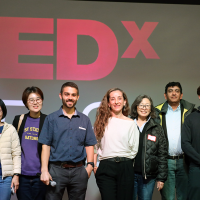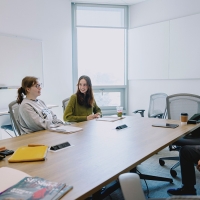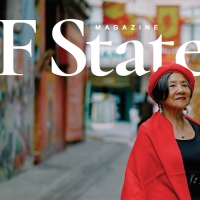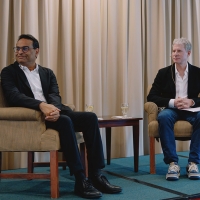Program trains the next generation of scientists and mentors
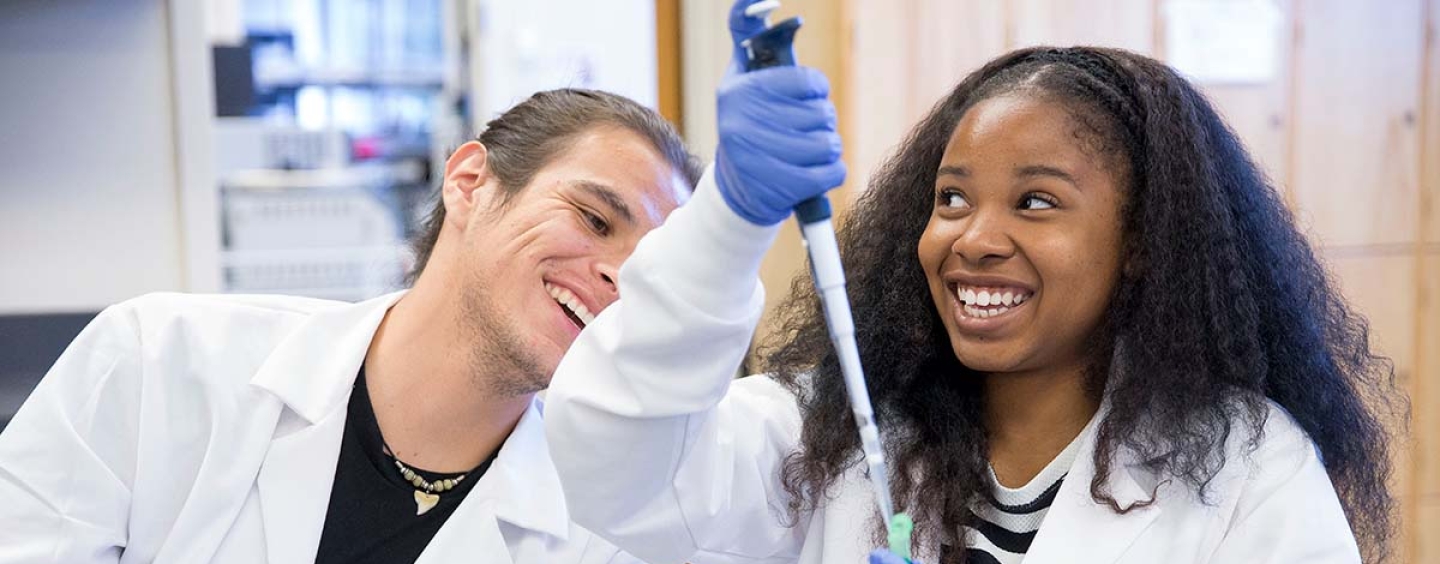
The Bridges to Doctorate program celebrates its 30th anniversary and its impact on University graduate students and the science community
In 1992, Michelle Alegria-Hartman (M.S., ’93) was a master’s student at San Francisco State University. She recalls frequently walking into the office of her thesis advisor, Biology Professor Frank Bayliss, to talk about science and her career. During one of these many conversations, Bayliss invited Alegria-Hartman to be the first student in what is known today at the University as the National Institutes of Health (NIH) Bridges to Doctorate program.
Now the program is celebrating its 30th anniversary — with instructors and students reflecting on the program’s impact. The program was recently awarded another $5 million from the NIH to continue for another five years.
“The purpose of the program is to support underrepresented minorities in the sciences, primarily biology and chemistry, but we’ve had students from physics, math and computer science as well,” said Bayliss, who served as director of the program for more than 26 years before retiring in 2018.
Bridges is one of several programs that fall under the College of Science & Engineering’s Student Enrichment Opportunities (SEO) office. In the 1980s, underrepresented minorities comprised less than 4% of the Biology master’s students at SF State. The introduction of Bridges and other programs has raised that percentage to 33.5% in the last decade and almost doubled the number of Asian master’s students. Analysis of 491 master’s students supported by SEO programs between 1992 and 2019 showed that more than half went on to complete a doctoral program (Ph.D. or MD) after SF State regardless of their undergraduate grade point average. That pattern of success represents what was observed in individual programs like Bridges, say Bayliss and current Bridges and SEO Director Megumi Fuse.
Bridges alums have entered different sectors of science, with many working in industry as researchers or executives, while others have gone into academia, education, law and more.
Financial incentives are important
“The program [Bridges] gives them some minimal funding but enough so [students] can focus on their studies,” Bayliss explained. Current students receive a stipend over $25,000 for the year and have 60% of tuition covered. They also have access to research opportunities and support for conferences, career development and Ph.D. preparation. That’s critical. While Ph.D. science students may receive a yearly stipend, there are far fewer opportunities for such funding for master’s students.
“If you look at women and minorities, they’re not going to be coming from families that can just support them to get a master’s degree or Ph.D.,” explained Alegria-Hartman, who now works in private industry. “You have to have financial incentives.”
As a graduate student, Alegria-Hartman also held a separate research job at Lawrence Livermore National Laboratory. Bayliss helped her coordinate her research at Livermore so it could do double duty as her master’s research project, a move that helped her balance her school workload and financial needs. After SF State, she completed her Ph.D. at the University of California, Davis.
Twenty years later, LeRoy Robinson Jr. (M.S., ’12) partly came to SF State because he knew about Bridges and other support for master’s students.
“SF State was also one of the few institutions for master’s students where they are also offering some kind of financial support so I wouldn’t necessarily have to go broke to do my master’s,” Robinson said. He did his master’s thesis research with faculty at the University of California, San Francisco, and went on to pursue a Ph.D. at New York University.
Mentees to mentors
“It’s a part of my responsibility to give back to the community,” Alegria-Hartman said. “I literally always say this: I wouldn’t be where I am today if it hadn’t been for a lot of people stepping forward and becoming my mentor. I believe mentors are key for students choosing a scientific career and obtaining their career goals.”
They also treated her like a colleague: SF State faculty would frequently share with her their recent scientific findings or interesting research papers. It felt like they were inviting her into the fold of being a researcher, which had a huge impact on Alegria-Hartman as a young scientist. They took the time to understand her goals and helped her navigate academia, grants, applications and personal decisions. Robinson says he had a similar experience.
“SF State was the only place, especially in the sciences, where I didn’t feel like the sole person of color that was in the room in conversations,” he said, noting that diversity and representation are important in his own career choices. In addition to being an SF State adjunct faculty member and lecturer, he is an associate medical director at a medical strategy agency (Prohealth) and a diversity, equity and inclusion associate editor for the journal “Women’s Health.”
Given SF State’s demographics, Alegria-Hartman thinks the University’s and Bridges’ impact is important for the health of the science field. The authentic care and education at SF State is key to giving a more diverse group of budding scientists the opportunity to blossom.
“It’s getting people in the pipeline. … Getting as many people as you can involved in the beginning of a scientist’s career and seeing if they really like science or not,” she said. “I think that really, really helps.”
Learn more about NIH Bridges to Doctorate and other similar programs offered by the Student Enrichment Opportunities office.
Tags
